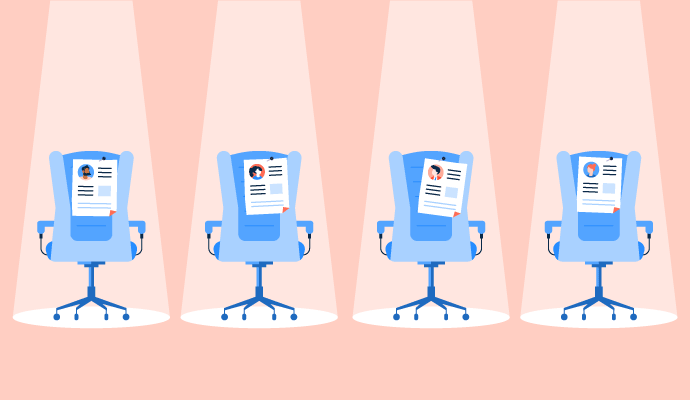The Evolution of Competitive Intelligence in SaaS
Competition is one of the essential elements of life on Earth.
For billions of years, organisms have competed for survival in rapidly changing environments and ecosystems. And for as long as humans have engaged in trade and commerce, competition has been instrumental in creating the world we live in today.
Successful businesses stand out from unsuccessful ones because they understand how their business compares to the rest of the market. A rigorous knowledge of the competitive landscape can be a crucial advantage for any company in its planning, decision-making and strategic implementation.
Competition in the world of B2B software is only heating up, which is why many companies are turning to competitive intelligence practices. However, competitive intelligence is a relatively new process, and most companies don't have a formal approach to doing it right.
To fully appreciate the power of competitive intelligence for software vendors, I spoke with industry expert Andy McCotter-Bicknell, head of competitive intelligence at ClickUp. With Andy's help, we'll explore the origins of competitive intelligence, how it's changed, and where it's likely to go next.
What is Competitive Intelligence?Competitive Intelligence (CI) is the collection and analysis of data from different sources to glean actionable insights about a business or organization in relation to its competitive landscape. The goal of CI is to obtain a better understanding of competitors, customers and the overall market to achieve better organizational efficiency and identify strategic advantages.
Competitive intelligence is extremely valuable because it aims to present unique opportunities and target potential weaknesses. Companies can use this information to guide product roadmaps, marketing campaigns, and go-to-market strategies.
The way organizations approach CI can be very different from company to company, but it allows them to make better decisions with greater confidence. Competitive intelligence is constantly evolving, but first let's take a look at where it came from.
The history of competitive intelligence in SaaSCollecting competitor information is nothing new.
The principle of competitive analysis has been around for hundreds of years. However, the explosion of technological innovation over the past few decades has paved the way for a more formal approach to competitive intelligence.
When it comes to the software and SaaS industry, there are basically two time periods worth noting:
Late 1970s - early 2000s: This was a time when competitor data gathering was more covert, almost akin to corporate espionage or clandestine organizations like the CIA. There was not much publicly available information and it was difficult or prohibitively expensive to collect quantitative data. Mid-2000s – present: With the boom in martech software beginning in the mid-2000s, companies gained access to a wealth of competitor and customer data."There wasn't a ton of publicly available information. And if there was, you had to know who to tap to get your hands on. The big change was the massive amount information available at the end of the 2000s.”
Andy McCotter-BicknellHead of Competitive Intelligence at ClickUpCompanies are analyzing more data than ever before, which has been a huge step forward in advancing competitive intelligence.
"Before, there wasn't so much, but now there's an overwhelming amount of information," McCotter-Bicknell says. "You really have to do your best to prioritize the things that really matter to your business."
Knowing how to execute based on this information is a huge challenge. As a result, competitive intelligence is increasingly becoming a crucial skill for some professionals.
How Competitive Intelligence Has ChangedCompetitive intelligence as a formal business practice is still in its infancy. Interestingly, its advancement is directly linked to the expansion of another relatively new concept in the business world: prod...

Competition is one of the essential elements of life on Earth.
For billions of years, organisms have competed for survival in rapidly changing environments and ecosystems. And for as long as humans have engaged in trade and commerce, competition has been instrumental in creating the world we live in today.
Successful businesses stand out from unsuccessful ones because they understand how their business compares to the rest of the market. A rigorous knowledge of the competitive landscape can be a crucial advantage for any company in its planning, decision-making and strategic implementation.
Competition in the world of B2B software is only heating up, which is why many companies are turning to competitive intelligence practices. However, competitive intelligence is a relatively new process, and most companies don't have a formal approach to doing it right.
To fully appreciate the power of competitive intelligence for software vendors, I spoke with industry expert Andy McCotter-Bicknell, head of competitive intelligence at ClickUp. With Andy's help, we'll explore the origins of competitive intelligence, how it's changed, and where it's likely to go next.
What is Competitive Intelligence?Competitive Intelligence (CI) is the collection and analysis of data from different sources to glean actionable insights about a business or organization in relation to its competitive landscape. The goal of CI is to obtain a better understanding of competitors, customers and the overall market to achieve better organizational efficiency and identify strategic advantages.
Competitive intelligence is extremely valuable because it aims to present unique opportunities and target potential weaknesses. Companies can use this information to guide product roadmaps, marketing campaigns, and go-to-market strategies.
The way organizations approach CI can be very different from company to company, but it allows them to make better decisions with greater confidence. Competitive intelligence is constantly evolving, but first let's take a look at where it came from.
The history of competitive intelligence in SaaSCollecting competitor information is nothing new.
The principle of competitive analysis has been around for hundreds of years. However, the explosion of technological innovation over the past few decades has paved the way for a more formal approach to competitive intelligence.
When it comes to the software and SaaS industry, there are basically two time periods worth noting:
Late 1970s - early 2000s: This was a time when competitor data gathering was more covert, almost akin to corporate espionage or clandestine organizations like the CIA. There was not much publicly available information and it was difficult or prohibitively expensive to collect quantitative data. Mid-2000s – present: With the boom in martech software beginning in the mid-2000s, companies gained access to a wealth of competitor and customer data."There wasn't a ton of publicly available information. And if there was, you had to know who to tap to get your hands on. The big change was the massive amount information available at the end of the 2000s.”
Andy McCotter-BicknellHead of Competitive Intelligence at ClickUpCompanies are analyzing more data than ever before, which has been a huge step forward in advancing competitive intelligence.
"Before, there wasn't so much, but now there's an overwhelming amount of information," McCotter-Bicknell says. "You really have to do your best to prioritize the things that really matter to your business."
Knowing how to execute based on this information is a huge challenge. As a result, competitive intelligence is increasingly becoming a crucial skill for some professionals.
How Competitive Intelligence Has ChangedCompetitive intelligence as a formal business practice is still in its infancy. Interestingly, its advancement is directly linked to the expansion of another relatively new concept in the business world: prod...
What's Your Reaction?






















